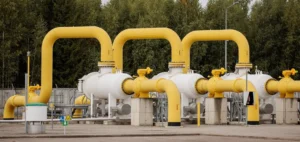The Asia-Pacific freight premium for LNG carriers with two-stroke engines reached its highest level of the year on September 16. Many ships are used as floating LNG storage facilities. This use results in a reduced supply prior to the winter shopping season.
Freight premium increase
The premium for bi-fuel (XDF) equipped LNG carriers was approximately $25,000/d in June of this year. This premium increased fivefold to $132,500 per day on September 16.
The current market situation can be summarized the statement of a broker from Singapore:
“The premium that larger vessels command is on the rise. This is because there are virtually no two-stroke LNG carriers available for spot loading in Asia.”
The cause of this increase: floating LNG storage
Multiple factors are driving this increase in the LNG freight premium. The structure of the contango market, difficulties in financing Russian cargoes and the shutdown of the Nord Stream 2 pipeline have combined to push freight prices higher.
The structure of the market is such that merchants stand to gain if they stock and sell only in November. Nevertheless, the onshore tanks are full. Traders are then forced to store LNG on ships.
In addition, LNG ships with XDF engines are best suited to undertake this type of storage. In fact, their size is relatively larger. They also have reliquefaction facilities on board and boiling in such vessels is less. Daily LNG boiling in traditional vessels can be as high as 0.25%, compared to 0.03% in XDF-powered vessels.
Alternatively, these vessels can use fuel oil in floating storage to reduce costs in the midst of high LNG prices.
The exact number of vessels used as floating storage is not available. Nevertheless, market participants said the number was at its highest level since the beginning of the year.






















